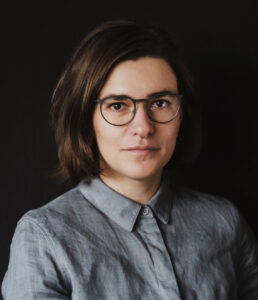Málþing á vegum Miðaldastofu Háskóla Íslands — A University of Iceland Centre for Medieval Studies Symposium
Föstudaginn 20. október 2023 kl. 14.00-17.00 — Friday, October 20, 2023, at 14.00-17.00
Fyrirlestrasal Eddu — Edda auditorium
 Dagskrá — Program:
Dagskrá — Program:
14.00–15.00 Neil Price, University of Uppsala: ‘Vikings’ in the (Far) East: The Conceptual Challenges
15.00-15.30 Kaffihlé — Coffee Break
15.30-16.00 Sverrir Jakobsson, University of Iceland: The First Crusaders: Varangians in Icelandic Cultural Memory
16.00-16.30 Daria Segal, University of Iceland: Western Saints in the Old Church Slavonic Litany of All Saints and 12th-century Rus’
16.30-17.00 Þórir Jónsson Hraundal, University of Iceland: Varangians in Arabic Sources
Málþingið er hluti af rannsóknaverkefninu Víkingar í Austurvegi — The symposium is part of the research project Legends of the Eastern Vikings.
Málþingið fer fram á ensku og er öllum opið. — The symposium will be conducted in English. All are welcome to attend.
Miðaldastofa Háskóla Íslands — The University of Iceland Center for Medieval Studies
—o—o—o—
Neil Price
‘Vikings’ in the (Far) East: The Conceptual Challenges

Over the past three decades or so, the academic study of the Viking Age has largely shaken off the illusion of a Norse ‘expansion’, and of discrete ‘western’ and ‘eastern’ arenas of Scandinavian activity, in favour of a fluid diaspora of movement and exchange. In the course of this same period, the Rus’ and their complicated ethnicities have been re-evaluated as an integrated part of a wider European world. At the same time, we are questioning our terminologies, labels, and ethnic concepts as never before: not just the ‘Vikings’, but also the Rus’ and the Varangians are all being critically deconstructed. However, these revisionist views have largely focussed on Western Europe, and on Northern interactions with Byzantium; much less attention has been paid to contacts with the Caliphate and the Eurasian steppe beyond. This situation is changing fast in textual scholarship, but archaeologists have been slower to engage with the Rus’ extended eastern range, and also with Scandinavian operations along the southern Mediterranean shore. There have been preliminary surveys of the excavated record and the Rus’ material repertoire, including – amongst many others – Tang silks and objects of nomad origin in Scandinavian burials, a field in which Birka studies have tended to dominate alongside the ubiquitous presence of dirhams. But is it really possible to conduct a genuine archaeology of the ‘Vikings’ in Western and Central Asia, and the roles they played in the wider world of the Silk Roads? While there is much talk of potential and the urgent need for the broadening of our research horizons, there is very much less actual work being done – and seemingly little discussion of who can or should be doing it. This paper explores our options and introduces some practical initiatives now underway.
Neil Price is Distinguished Professor of Archaeology at the University of Uppsala, and Director of the Swedish Research Council Centre of Excellence on The World in the Viking Age at the same institution. Educated at UCL, York and Uppsala, he previously held academic posts at the universities of Oslo, Stockholm, and Aberdeen. A specialist in the late Iron Age, at Uppsala he currently directs the ten-year research project on The Viking Phenomenon. His most recent books are The Viking Way (2nd ed., 2019) and Children of Ash and Elm: A History of the Vikings (2020).
—o—
Sverrir Jakobsson
The First Crusaders: Varangians in Icelandic Cultural Memory

Medieval identities have been the subject of much scrutiny as a precursor to modern, national identities. Medieval peoples are usually seen as the ancestors, however imperfectly, of modern peoples and the search for their views on themselves have been a part of the debate of the origin of moderns. But what about medieval peoples that did not leave behind any well-defined modern entities? The Varangians are such a group. For a period of three or four centuries, the Varangians existed and then they were gone, seemingly without a trace. They became a part of the memory of people in various European countries and cultures, a memory that progressively was shaped by the rules and requirements of its own metanarrative. The Varangians did not leave behind any modern institutions and very little material remains that can be traced back to them. Their survival was due to their place in a narrative, which can be called the Varangian legend. The grand narratives about the Varangians had different versions within different cultures. One of them is the Russian/Ukrainian concerning the foundation of the earliest Rus state. Another one, which will be the focus of this paper, is the development of the Old Norse tradition of the Varangian warriors in the service of the Roman emperor. The Varangians were incorporated into the cultural memory of Medieval Icelanders in many types of thirteenth and fourteenth century works belonging to the genres of the king’s sagas, the family sagas, and the romance literature. Such works are situated on the border between history and fiction and serve as a guide to a legendary and semi-legendary past. In the cultural memory of thirteenth and fourteenth century Iceland, the formative period of the Varangians was also regarded as a precursor to the era of the crusades. Prominent families from the west of Iceland played a leading role in the commemoration of that past, as people from those families emphasized the connection of their kinfolk to King Haraldr of Norway, the archetypical Varangian in Scandinavian cultural memory. But the Varangian past served its purpose for narrators of history from all of Iceland, as a few common archetypes came to dominate the debate on the Varangians. The Varangian became an exemplary character as to honour and noble behaviour, but also disconnected from Icelandic society and its mundane quarrels.
Sverrir Jakobsson is Professor of Medieval History at the University of Iceland (Háskóli Íslands) and head of the Faculty of Philosophy, History and Archaeology. He has written several books on history, such as Auðnaróðal: Baráttan um Ísland 1096–1281 (2016), Kristur: Saga hugmyndar (2018), and The Varangians: In God’s Holy Fire (2020).
—o—
Daria Segal
Western Saints in the Old Church Slavonic Litany of All Saints and 12th-century Rus’

While the Christianisation process on the periphery of Eastern and Northern Europe started almost simultaneously, the confrontation between Orthodox and Latin traditions, though present in official church writing from the mid-eleventh century, was not explicitly articulated in secular society until the beginning of the thirteenth century. This study examines the Old Church-Slavonic Litany of All Saints incorporated into the Trinity prayer, a translated compilation of Latin and Greek prayers, produced during a period of close connection between royal courts of Western and Eastern Europe. The Litany includes a peculiar list of saints, including royal Scandinavian and Eastern European ones, as well as regal terminology, which makes it especially relevant for the twelfth-century Rus’, a period of unrest when additional assistance from royal saints would have been beneficial in the processes of legitimising royal power. The Litany has been previously widely discussed in the light of Scandinavian saints’ veneration in Rus’. However, it was rarely contextualized in terms of its relevance to the audience, both earthly and heavenly. Analysing and transcribing the newly discovered text witness, Sin. Slav.13/o, the aim of this talk is to emphasize the significance and impact of the Litany for the royal dynasties of the medieval Rus’, its relevance for legitimization of power, and, on these grounds, proposes a probable dating of the reading preserved in Sin. Slav. 13/o manuscript.
Daria Segal is a Ph.D. candidate in History at the University of Iceland, currently teaching course on Medieval Travelling. She specialises in Medieval Scandinavian and Rus’ian history with an emphasis on written texts along with their transmission and reception by medieval society. In addition, her research interests include Cult of Saints in the Middle Ages. Daria is a co-editor of the upcoming volume “The Making of the Eastern Vikings”, in which she also presents her research on terminology regarding Scandinavians in Medieval Rus’ian chronicles.
—o—
Þórir Jónsson Hraundal
Varangians in Arabic Sources

Numerous medieval Arabic sources contain passages and references on the movements of Northmen in the Viking age. Among the Arabo-Islamic writers they are identified with several different names: in Muslim Iberia they were known by names such as majus (pagan, fire-worshipper) or al-urduman (reflection of Nordman) while in the Middle Eastern corpus they are almost exclusively referred to as Rus or Rusiyyah. An exception to this is a handful of sources which employ the term warank, which is the Arabic version of the Greek varangoi, and the Old Norse væringjar. Even though the instances of this name in the Arabic corpus are few in number they are not without interest, not least since the works in which they appear belong to important and influential scholars of the medieval Islamic world.
In this talk, I will focus on two aspects of the Varangian question in relation to the Arabo-Islamic world. One is the explicit mention of Varangians in Arabic sources, first appearing in the eleventh century in the works of Al-Biruni and Al-Kashgari. I will also look at possible ways of the transmission of the word, and how it may have entered the writings of scholars in Central Asia and Baghdad at such an early stage. Secondly, it addresses descriptions of Rus/vikings in the east that may be connected to their well known role as a special military or guards unit as it comes across in Byzantine sources, and with which the term ‘varangian’ is tightly associated.
Þórir Jónsson Hraundal earned his doctoral degree in medieval studies at the Centre of Medieval Studies of the University of Bergen in 2013, M.Litt. degree at the University of Cambridge in 2005 and BA degree at the University of Iceland in 1998. His research is mainly focused on Arabic medieval geographies and texts describing Rus/Vikings in the east, and their contacts with the Turkic and Islamic worlds.
Málþingið fer fram á ensku og er öllum opið. — The symposium will be conducted in English. All are welcome to attend.
Miðaldastofa Háskóla Íslands — The University of Iceland Center for Medieval Studies
—o—o—o—
